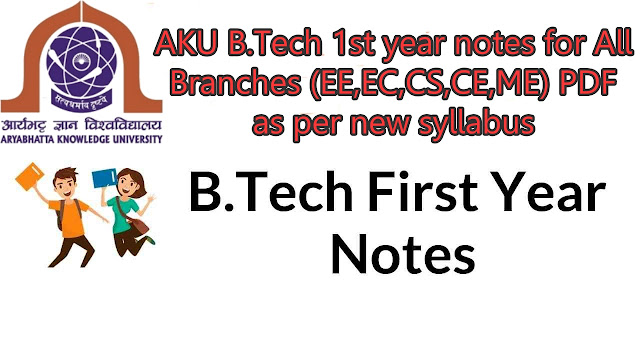NPTEL Introduction To Internet Of Things Assignment 4 Answers 2023 (July- Oct) - week 4
Welcome to a detailed exploration of the NPTEL Introduction To Internet Of Things Assignment 4 for the period of July to October 2023. In this guide, we delve into Sensor Networks (Part III, Part IV, Part V, and Part VI) and Machine-to-Machine Communications, providing you with valuable insights to ace your assignment. Whether you're a student aiming for a top grade or an IoT enthusiast seeking to deepen your knowledge, this article has you covered.
NPTEL Introduction To Internet Of Things Assignment 4 Answers 2023
NOTE:- Answers will be updated shortly and it will be notified in our Youtube & Telegram Group. So Join Now
Join Our YoutubeJoin Now
Join Us On TelegramJoin Now
Statement: Coverage in WSN is defined as the area-of-interest is covered satisfactorily.
Answer: a. True
If transmission range >= 2* sensing range,
Answer: b. Coverage implies connectivity
The two types of reporting in WSN are -
Answer: c. Event driven and on demand
The objective of coverage in WSN is to use a _______________ number of sensors and _______________ the network lifetime.
Answer: b. minimum, maximize
The disadvantages of stationary Wireless Sensor Networks are -
Statement-I: Node failure may result in partition of networks.
Statement-II: Topology cannot change automatically.
Answer: a. Statement-I True, Statement-II False
A _________________ in MWSN moves in order to collect data from sensor nodes and goes to the sink and delivers the collected data from different sensor nodes.
Answer: c. Mule
__________________ allows distributed sensing carried by humans and the goal is not just to collect data but to allow the common people to assess and share the knowledge.
Answer: d. Participatory sensing
Which of the following is/are NOT feature/features of UAV networks?
Answer: a. Mesh or star networks
Which of the following is NOT a UAV network constraint?
Answer: d. None of these
In _____________________ configuration, UAVs form multiple star topology. One node from each group connects to the ground station.
Answer: b. Ring
The full form of FANET is?
Answer: a. Flying Ad Hoc Network
Low-end sensor nodes are those-
Answer: b. Who perform basic functions such as data aggregation, auto configuration, and power saving.
Which of the following are the components of the M2M ecosystem?
Answer: c. Device Providers
Statement: The M2M Device Platform enables access to objects connected to the Internet anywhere any time.
Answer: a. True
Statement: The M2M Application Platform provides integrated services based on device collected data-sets.
Answer: a. True
1. Unraveling Sensor Networks: Part III
In this section, we dive into Sensor Networks - a crucial aspect of the Internet of Things. From understanding the basics of sensor networks to exploring their applications in various fields, such as healthcare and agriculture, we'll equip you with the knowledge needed to excel in your assignment.
2. Expanding Horizons: Sensor Networks Part IV
Building upon the foundations laid in Part III, Part IV takes us further into the realm of sensor networks. Discover the intricacies of data acquisition, processing, and transmission within these networks. We'll explore real-world examples that showcase their impact on modern technologies and society.
3. Innovations in Sensor Networks: Part V
Part V delves into the cutting-edge innovations within sensor networks. Learn about emerging trends like edge computing and AI integration, which are revolutionizing how sensor networks operate. By grasping these advancements, you'll be better prepared to discuss the future of IoT and its potential implications.
4. Security in Sensor Networks: Part VI
The security of sensor networks is of paramount importance. In Part VI, we unravel the challenges associated with safeguarding these networks from cyber threats. Explore encryption techniques, authentication protocols, and best practices to ensure the integrity and confidentiality of data transmitted by sensors.
5. Navigating Machine-to-Machine Communications
Machine-to-Machine (M2M) Communications play a pivotal role in the IoT landscape. This section sheds light on how machines communicate autonomously, enabling seamless data exchange and decision-making. Gain insights into the protocols, architectures, and real-world applications of M2M communications.
6. FAQ's
Can I access the NPTEL Introduction To Internet Of Things Assignment 4 for previous years?
Unfortunately, the assignments provided are specific to the current year. However, you can review past assignments to build a solid understanding of the subject.
How can I excel in the Sensor Networks section?
To excel, focus on grasping the fundamental concepts of sensor networks, explore real-world use cases, and understand the significance of data security within these networks.
Are there any prerequisites for understanding Machine-to-Machine Communications?
A basic understanding of IoT concepts will be helpful. It's also recommended to review networking principles to comprehend the intricacies of M2M communications effectively.
Can you suggest additional resources for further learning?
Certainly! Websites like Coursera, edX, and IoT-related forums can provide supplementary learning materials and insights from experts in the field.
What role does Machine-to-Machine Communications play in industrial automation?
M2M communications enable machines to exchange critical information in real-time, enhancing efficiency and accuracy in industrial processes.
How can I stay updated with the latest trends in IoT and sensor networks?
Following reputable IoT blogs, attending webinars, and participating in online forums are excellent ways to stay informed about the latest trends and advancements in these fields.
Conclusion
Congratulations! You've gained a comprehensive understanding of the NPTEL Introduction To Internet Of Things Assignment 4 for the period of July to October 2023. From delving into the intricacies of Sensor Networks to exploring the world of Machine-to-Machine Communications, you're now equipped with the knowledge needed to excel in your studies or further your enthusiasm for IoT. Remember to stay curious and keep exploring the ever-evolving landscape of the Internet of Things.





